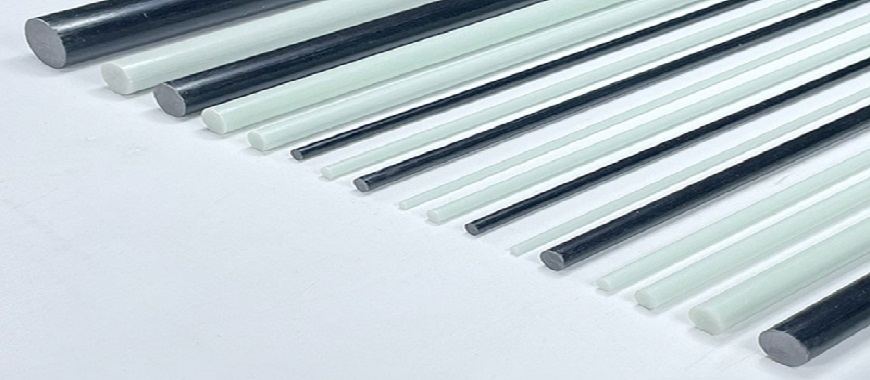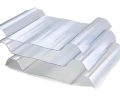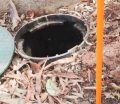
Solid fiberglass poles are widely used across many industries due to their versatility and strength. In construction, they provide support in frameworks, while in agriculture, they serve as reliable fencing or irrigation system components. Outdoor applications, such as flagpoles or antenna supports, also benefit from the use of solid fiberglass poles.
These poles are popular for their durability and long lifespan. They resist corrosion, even in harsh environments, making them ideal for both coastal and industrial applications. Their lightweight nature allows for easier installation and transportation, without compromising strength. Due to these qualities, solid fiberglass poles are favored over traditional materials like wood or metal in numerous projects.
Key Factors for Consideration When Choosing a Solid Fiberglass Pole
When selecting a solid fiberglass pole, it’s essential to evaluate several factors to ensure it meets your project’s needs. These factors will influence the pole’s performance, durability, and overall cost-effectiveness.
Size Variability
The size of a solid fiberglass pole is crucial depending on the application. Fiberglass poles are available in different sizes, with 1″ fiberglass poles and 10 ft fiberglass rods being popular options. Smaller poles, such as the 1″ size, are ideal for lightweight applications like residential fencing or small flagpoles. Larger sizes, like the 10 ft solid fiberglass pole, are better suited for more demanding applications, such as supporting heavier structures in industrial settings. Choosing the appropriate size ensures the pole performs effectively for the specific task.
Strength and Durability
A solid fiberglass pole is known for its high tensile strength, making it an excellent choice for projects requiring long-term durability. Unlike steel, fiberglass poles don’t rust or corrode, even in harsh conditions such as coastal environments or high-humidity areas. This ensures they last longer and require less maintenance, reducing overall project costs. Additionally, they are resistant to UV radiation, ensuring their structural integrity in outdoor settings.
Weather Resistance
One of the key advantages of a solid fiberglass pole is its ability to withstand extreme weather conditions. Whether exposed to strong winds, heavy rain, or saltwater, fiberglass poles maintain their integrity without deterioration. This makes them a preferred choice for coastal regions or places with severe weather conditions, where other materials might fail over time.
Lightweight Nature
Another significant factor to consider is the lightweight nature of a solid fiberglass pole. Despite being strong, fiberglass is much lighter than steel or wood, making it easier to transport and install. This feature is especially important for large-scale projects where labor and transportation costs can add up. A lighter material simplifies the installation process and lowers costs without compromising strength.
Low Maintenance
A solid fiberglass pole requires minimal maintenance compared to metal or wood alternatives. It doesn’t rust, warp, or rot, which means less frequent repairs or replacements. This quality makes it a cost-effective solution in the long term, especially for projects in remote or difficult-to-reach areas where regular maintenance is challenging.
Popular Sizes and Products of Solid Fiberglass Poles
Choosing the right size for a solid fiberglass pole is essential for ensuring optimal performance in various applications. Here, we explore some popular sizes and their specific uses across industries.
1″ Fiberglass Pole
The 1″ solid fiberglass pole is widely used in both residential and commercial applications due to its balance between strength and flexibility. In garden structures, these poles provide a durable yet unobtrusive framework for fencing or trellis systems. Their lightweight nature allows for easy installation in light-duty construction projects. Despite their smaller size, these poles offer excellent resistance to corrosion and harsh weather, making them a practical choice for outdoor use where longevity is a priority.
10 ft Fiberglass Rod
A 10-foot solid fiberglass rod is favored for more demanding applications due to its length and strength. It is highly versatile, often used in industries such as telecommunications, where long fiberglass rods are essential for supporting antennas or flagpoles. The extended length provides added structural integrity, making it suitable for projects that require height without sacrificing stability. This size is also popular for signage or lighting installations in commercial areas, as it combines durability with minimal maintenance requirements.
1/2″ Fiberglass Rod (10 ft)
The 1/2″ solid fiberglass pole, particularly in the 10 ft length, is ideal for specialized applications where both a smaller diameter and extended length are needed. These poles are often used in lightweight framework projects, such as antenna supports or temporary outdoor structures. Despite their smaller size, they retain the high tensile strength and weather resistance of larger fiberglass poles, making them a reliable choice for applications requiring precision and minimal weight. This size is perfect for projects needing flexibility without compromising on structural integrity.
By selecting the appropriate size and type of solid fiberglass pole, you ensure that your project has the right balance of durability, flexibility, and cost-efficiency.
Exploring Key Features of the Sirio 3 Element Beam CB
Pricing Overview of Solid Fiberglass Poles
Understanding the solid fiberglass pole price structure is essential for making an informed decision. Several factors influence the overall cost, and it is important to consider both the upfront expense and long-term value when purchasing fiberglass poles.
Factors Influencing the Cost
The price of a solid fiberglass pole depends on various factors. One of the primary considerations is size, with larger poles typically costing more due to increased material usage. The diameter also plays a role; for example, a 1″ fiberglass pole will generally be priced lower than thicker options due to its smaller mass. Customization options, such as specific lengths or unique finishes, can further affect pricing, as specialized production processes may be required.
Average Price Range for Common Sizes
While the exact price of a solid fiberglass pole varies, general ranges can be expected based on common sizes. Smaller poles, such as 1″ fiberglass poles or 1/2″ fiberglass rods, typically fall within the lower price range. Longer poles, such as 10 ft fiberglass rods, may cost more due to their length and material requirements. These variations in pricing are largely due to the size and structural demands of the specific application.
Long-Term Cost Benefits
Although the initial price of a solid fiberglass pole may be higher than some alternatives, the long-term cost benefits are significant. Fiberglass poles require minimal maintenance, reducing the need for frequent repairs or replacements. Unlike metal poles, they do not corrode or rust, even in harsh weather conditions, which leads to cost savings over time. Their extended lifespan also means that fewer replacements are necessary, making them a more economical choice in the long run. Additionally, the lightweight nature of fiberglass poles can reduce transportation and installation costs, further adding to their value.
Where to Find High-Quality Epoxy Fiberglass Tube for Sale Online
Advantages of Solid Fiberglass Poles
Choosing a solid fiberglass pole comes with numerous advantages that make it a superior option for a wide range of applications. Below are key benefits that set fiberglass poles apart from other materials like steel or aluminum.
Weather Resistance
A solid fiberglass pole excels in withstanding harsh weather conditions. Unlike metal, fiberglass resists corrosion even in coastal environments or areas with high humidity. These poles are also highly resistant to UV damage, ensuring that they won’t degrade or weaken when exposed to sunlight for extended periods. In extreme temperatures, from freezing cold to intense heat, solid fiberglass poles maintain their structural integrity without cracking or warping.
Lightweight but Strong
One of the most notable advantages of a solid fiberglass pole is its combination of lightweight design and exceptional strength. Fiberglass is significantly lighter than both steel and aluminum, making it easier to transport and install. Despite this reduced weight, it retains impressive tensile strength, making it suitable for demanding applications such as supporting structures or electrical equipment. This balance of lightness and durability reduces labor costs while maintaining safety and reliability.
Low Maintenance
A solid fiberglass pole requires minimal maintenance compared to metal alternatives. Metal poles may rust or corrode over time, necessitating regular upkeep to prevent deterioration. In contrast, fiberglass poles are inherently resistant to environmental wear and tear, meaning fewer repairs and replacements are needed. This reduces both maintenance costs and downtime over the lifespan of the pole, making it an economical long-term investment.
Electrical Insulation
An additional benefit of a solid fiberglass pole is its natural electrical insulation properties. Fiberglass does not conduct electricity, which makes it a safer option in environments where electrical hazards are present. This is particularly important in applications like power distribution, antenna support, or areas prone to lightning strikes, where non-conductive materials reduce the risk of accidents.
Versatility in Applications
The adaptability of a solid fiberglass pole makes it suitable for a broad spectrum of uses, including residential, commercial, and industrial projects. Its resistance to weather and environmental stress allows it to perform reliably in outdoor settings, while its strength and flexibility make it ideal for both structural and aesthetic applications. Whether used in fencing, lighting, or antenna support, these poles offer a versatile solution that meets the demands of diverse projects. A fiberglass cane fishing pole, with its lightweight design and durability, is another great example of how fiberglass poles can be tailored to meet specific needs, in this case, providing a reliable and flexible tool for anglers.
Choosing the Right Fiberglass Pole for Your Project
Tips for Selecting the Right Size and Specifications
When selecting the right solid fiberglass pole for your project, consider factors like size, diameter, and intended use. Smaller poles, such as 1″ or 1/2″ fiberglass rods, are ideal for residential or light-duty applications. Larger poles, like 10 ft fiberglass rods, provide greater strength and stability for industrial or commercial settings. Think about the environmental conditions and the load the pole will need to support.
Consult Professionals for Customized Solutions
For projects requiring specific dimensions or unique needs, GangLong Fiberglass offers customization options. Consulting with professionals ensures you choose the best solid fiberglass pole for your application. Customized poles can be designed to fit your project’s exact requirements, ensuring optimal performance and longevity.
The Benefits of Choosing a Solid Fiberglass Pole from GangLong Fiberglass
A solid fiberglass pole from GangLong Fiberglass offers unmatched durability, flexibility, and cost-effectiveness. These poles are designed to withstand harsh weather conditions, resisting corrosion, UV damage, and temperature extremes, making them ideal for both residential and industrial applications. Their lightweight yet strong construction ensures easy installation without compromising structural integrity, offering significant advantages over traditional materials like steel or aluminum. Additionally, the low maintenance requirements of GangLong Fiberglass poles translate to long-term savings, reducing the need for frequent repairs and replacements.
Choosing the right solid fiberglass pole for your project can greatly enhance its efficiency and longevity. Whether you need a pole for outdoor structures, fencing, or other specialized uses, GangLong Fiberglass provides a variety of sizes and options to suit your needs. Explore the range of fiberglass poles available, and consider how these versatile products can benefit your next project. Contact GangLong Fiberglass today to learn more about customization options and find the perfect solution for your specific application.
FAQs about Solid Fiberglass Pole
The life expectancy of a solid fiberglass pole is typically very long. Depending on the environmental conditions, fiberglass poles can last for several decades. Fiberglass is highly resistant to corrosion, UV radiation, and harsh weather, making it an ideal material for outdoor use. In most cases, a fiberglass pole can remain functional for 30 years or more with minimal maintenance. However, factors like extreme weather, improper installation, or physical damage may reduce its lifespan slightly.
Yes, solid fiberglass poles are considered excellent for many applications. They offer significant advantages over traditional materials like wood or metal. Fiberglass poles are lightweight yet very strong, making them easy to transport and install. They also resist corrosion, rot, and UV damage, making them ideal for both coastal and inland environments. Additionally, fiberglass requires very little maintenance over its lifetime, reducing long-term costs. Their versatility allows them to be used in everything from light poles and fencing to structural frameworks.
When comparing strength, solid fiberglass poles tend to be stronger than aluminum poles. Fiberglass has a higher tensile strength, meaning it can handle greater stress without breaking. Aluminum, while strong, is more prone to bending or denting under pressure. Additionally, fiberglass resists corrosion and weather damage better than aluminum, especially in salty or highly humid environments. For projects requiring long-term durability and strength, fiberglass is often the preferred choice. However, aluminum may be better suited for applications requiring lighter materials.
No, solid fiberglass itself is not toxic when used correctly. Fiberglass is made from fine glass fibers, which are safe in their solid form. However, during the manufacturing process or if the fiberglass is cut or damaged, fine particles can be released into the air. These particles can irritate the skin, eyes, and lungs if inhaled or touched. To prevent exposure, it’s recommended to handle fiberglass with proper protective equipment, such as gloves and masks. Once installed and undisturbed, fiberglass poses no toxicity risk.

As the editor of GangLong Fiberglass, I have years of experience and in-depth research, focusing on cable tray products, fiberglass solutions, and grille systems. I incorporate years of industry insights and practical experience into every content, committed to promoting the progress of the industry. At GangLong Fiberglass, my commitment is reflected in every product, from innovative cable trays to durable fiberglass solutions and sturdy grille systems. As an authoritative voice in the industry, my goal is to provide valuable information to professionals and businesses and promote forward-looking solutions.


